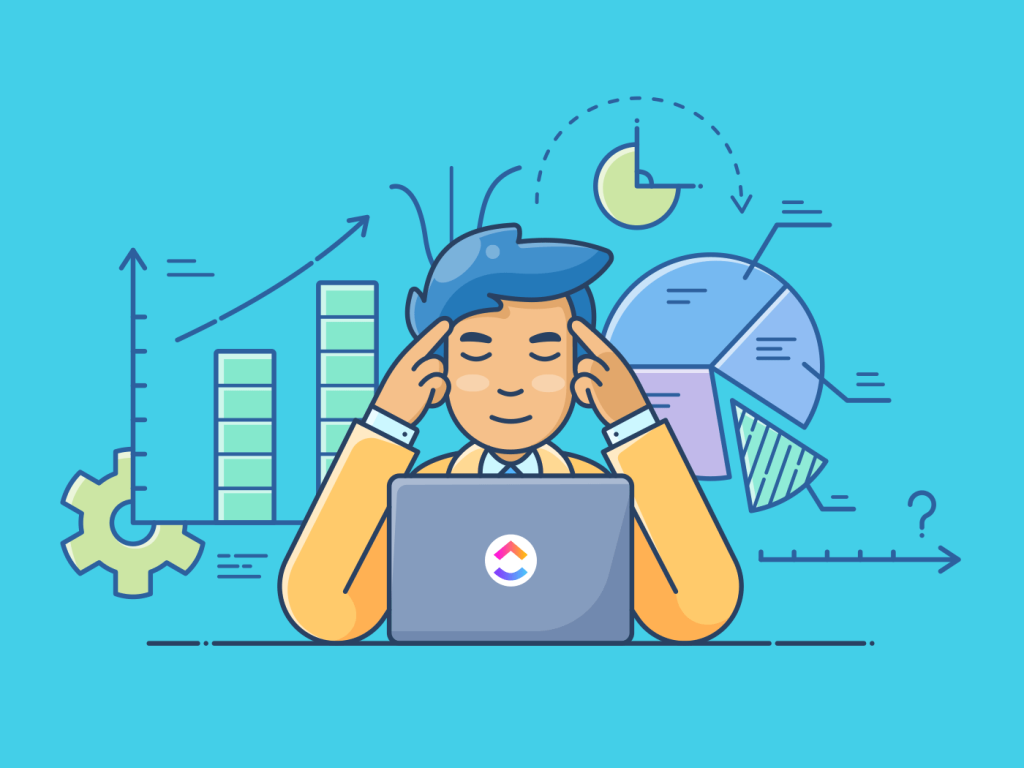Staying Focused When Your To-Do List Is Never-Ending
Megan Gray August 4, 2025
Are you feeling buried under a mountain of tasks that never seem to end? You’re not alone. Many of us struggle with maintaining focus amidst an overflowing to-do list. However, it’s possible to tackle that pile of work and stay productive without burning out. This guide explores the latest methods and expert-backed techniques to help you stay focused and get more done, without the stress.

Understanding the Challenge of an Overwhelming To-Do List
Let’s face it: our daily lives are filled with distractions, and our to-do lists seem to multiply faster than we can check them off. The struggle to stay focused isn’t just about time management, but about mental overload. The brain can only handle so many tasks before it begins to feel like it’s on overdrive. The fact is, task overload is a real issue, and the more we try to juggle, the more our productivity suffers.
According to a study by the American Psychological Association, multitasking can reduce productivity by as much as 40% (APA, 2020). When you’re overwhelmed by a growing list, your brain doesn’t focus on one thing—it tries to handle everything at once, leading to mistakes, forgetfulness, and even burnout.
The Science Behind Task Overload
Research has shown that constantly switching between tasks or “multitasking” reduces cognitive efficiency. Studies suggest that the human brain isn’t built for multitasking. Each time we switch tasks, our brain has to refocus, leading to a mental cost. This cognitive “switching” is one of the reasons why people feel so mentally fatigued when their to-do list keeps growing (Gollwitzer, 2021).
In addition to cognitive load, task overload also increases stress. Our brain responds to the feeling of being overwhelmed by releasing cortisol, the stress hormone. Prolonged exposure to this stress hormone can affect memory, focus, and overall health. Therefore, it’s essential to manage your to-do list effectively in order to avoid these negative effects.
Trending Strategies for Staying Focused
In the modern age, staying focused on an ever-growing to-do list requires more than just motivation; it requires strategies and tools that can help us stay organized and on track. Here are some current trending techniques to help you stay focused:
1. Task Prioritization: The Eisenhower Matrix
One of the most effective strategies for managing an overwhelming to-do list is learning how to prioritize tasks. A popular method used by productivity experts is the Eisenhower Matrix. This tool helps you categorize your tasks based on urgency and importance:
- Important and Urgent: Do these first.
- Important but Not Urgent: Schedule these.
- Urgent but Not Important: Delegate these if possible.
- Neither Urgent Nor Important: Eliminate these.
By focusing on tasks that align with your goals, you can avoid wasting time on non-essential activities, making your to-do list more manageable.
2. Time Blocking for Focused Work
Time blocking is a time management technique where you assign specific periods to different tasks throughout the day. Rather than letting your to-do list control your day, you take control of your time. Research indicates that time blocking boosts productivity and reduces the temptation to procrastinate (Gollwitzer, 2021). This method allows you to focus intensely on one task at a time, without feeling overwhelmed.
When you block time for each task, you’re less likely to let one task spill over into the next. This helps you stay on track and reduces mental clutter. You can also include break times in your blocks, allowing your mind to recharge.
3. Use Technology to Stay Organized
Technology offers a wealth of tools to help organize and manage your tasks. Apps like Trello, Todoist, and Asana allow you to break down your to-do list into manageable chunks and track your progress. These apps help you visually organize tasks and set deadlines, which aids in reducing cognitive overload.
A study found that using task management apps increases task completion rates and reduces procrastination (Zeidan et al., 2010). By digitally tracking your tasks, you can see exactly where you stand, helping you stay focused on your goals.
4. Mindfulness and Meditation for Mental Clarity
The never-ending to-do list can cause stress and hinder focus. Mindfulness techniques, such as deep breathing and meditation, have been shown to improve focus and reduce anxiety. A study by the National Institutes of Health found that regular mindfulness practice can enhance cognitive control, helping you stay focused even under pressure (Zeidan et al., 2010).
Mindfulness encourages you to stay in the moment, helping you avoid becoming distracted by the overwhelming nature of a long to-do list. By calming your mind, you can approach tasks with more clarity and focus.
5. The 2-Minute Rule to Tackle Small Tasks
The 2-minute rule, popularized by productivity consultant David Allen, suggests that if a task can be completed in two minutes or less, do it immediately. This approach prevents small tasks from accumulating and overwhelming you. By tackling these quick tasks right away, you free up your mental space for more important activities.
According to productivity research, reducing the number of small tasks in your mind can reduce the feeling of being overwhelmed (Baumeister & Tierney, 2011). Completing quick tasks immediately keeps your to-do list from growing unnecessarily.
Breaking Tasks into Micro-Tasks
Another effective way to prevent feeling overwhelmed is by breaking large tasks into smaller, more manageable pieces. For instance, if a project seems daunting, divide it into individual steps that can be completed in short bursts of time. Research has shown that micro-tasking can significantly improve focus and reduce procrastination, making it easier to stay on track (Baumeister & Tierney, 2011).
By focusing on one small step at a time, you can keep your momentum going. Each step completed brings you closer to your goal, and you’ll feel less bogged down by the enormity of the task.
Avoiding the Procrastination Trap
Procrastination is a common reaction to feeling overwhelmed by a long to-do list. To combat this, it’s essential to embrace the “one-minute rule”: commit to working on a task for just one minute. This low-pressure approach often leads to longer, more productive work sessions. Over time, this can help shift your mindset and reduce procrastination tendencies.
Studies have found that once people commit to working for a short period of time, they are more likely to continue working for longer durations (Baumeister & Tierney, 2011).
The Pomodoro Technique for Maintaining Focus
Continuous work without breaks is a productivity killer. The Pomodoro Technique, which involves working for 25 minutes followed by a 5-minute break, is one of the most effective ways to stay focused and prevent burnout. Studies show that short, regular breaks help sustain focus and improve cognitive performance (Cirillo, 2006).
The Pomodoro Technique also allows you to track your progress in manageable intervals, making your to-do list feel less overwhelming. Over time, you’ll begin to associate productivity with these manageable chunks of time.
Dealing with Digital Distractions: Digital Detox and Focus Apps
We all know how easily we can get distracted by notifications from our phones and computers. To stay focused, try turning off non-essential notifications or use apps like Forest or Focus@Will, which block distracting sites and help you stay focused on your task. Reducing digital interruptions can increase productivity by up to 40% (Sweeney, 2019).
By eliminating digital distractions, you create an environment that supports focus. The fewer external interruptions you have, the easier it is to keep your to-do list in check.
Conclusion: Mastering the Art of Focus
Managing a never-ending to-do list requires more than just planning; it demands focus, discipline, and the right strategies. By implementing task prioritization, time blocking, and mindfulness, you can reduce stress and stay on top of your work. With the right tools and techniques, you can turn your overwhelming list into a well-managed set of actionable tasks, one focused session at a time.
By adopting the strategies outlined above, you can take control of your to-do list and transform overwhelming tasks into manageable chunks. Staying focused is no longer a challenge—it’s a skill you can develop and refine over time. Start implementing these tips today and see how they can help you become more productive without sacrificing your well-being.
References:
- American Psychological Association (APA) (2020) The impact of multitasking on productivity. Available at: https://www.apa.org (Accessed: 4 August 2025).
- Gollwitzer, P. M. (2021) Time management and goal setting. Available at: https://onlinelibrary.wiley.com (Accessed: 4 August 2025).
- Zeidan, F., Johnson, S. K., Diamond, B. J., & David, Z. (2010) Mindfulness meditation improves cognition: Evidence of brief mental training. Available at: https://www.sciencedirect.com (Accessed: 4 August 2025).







